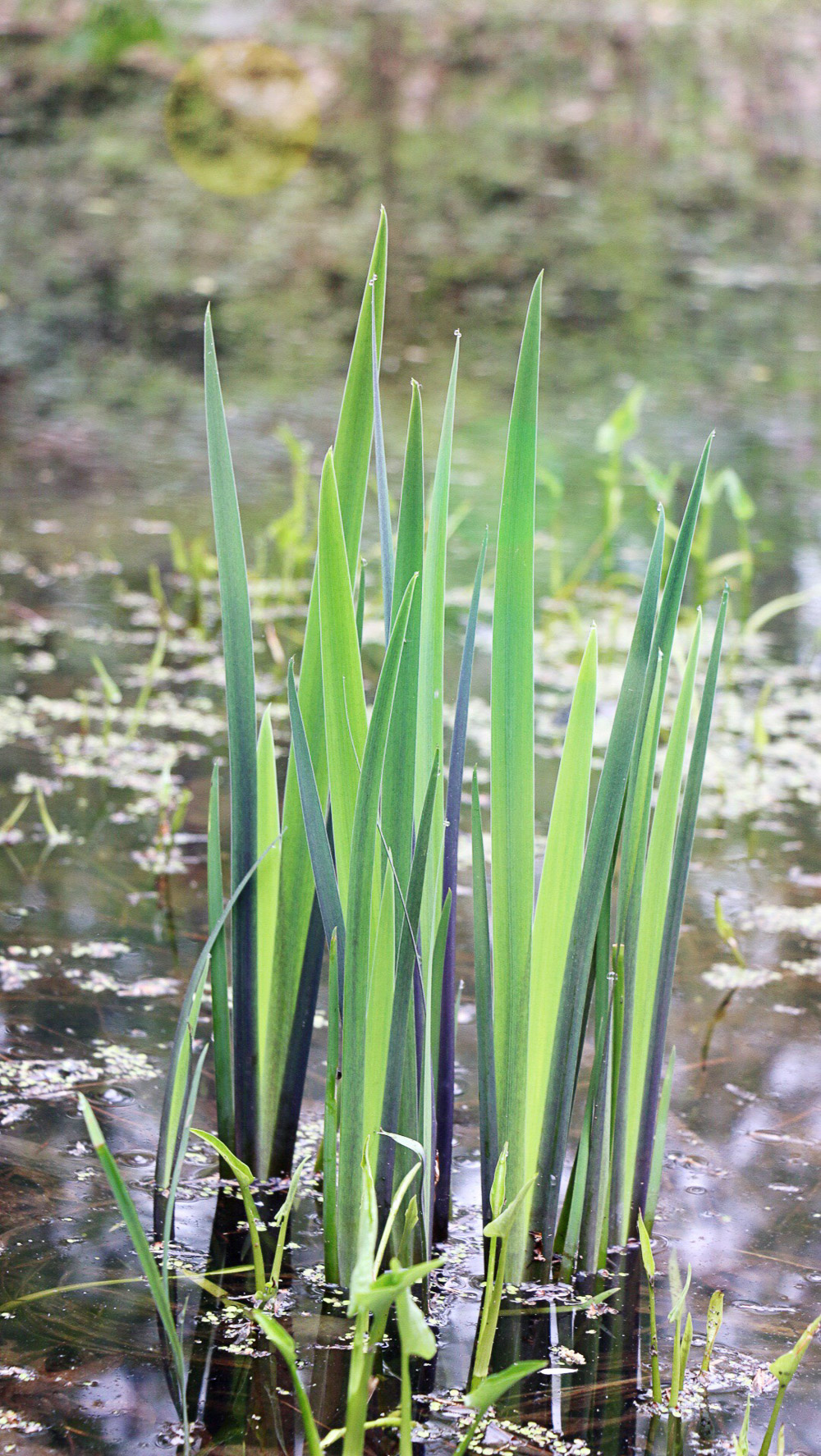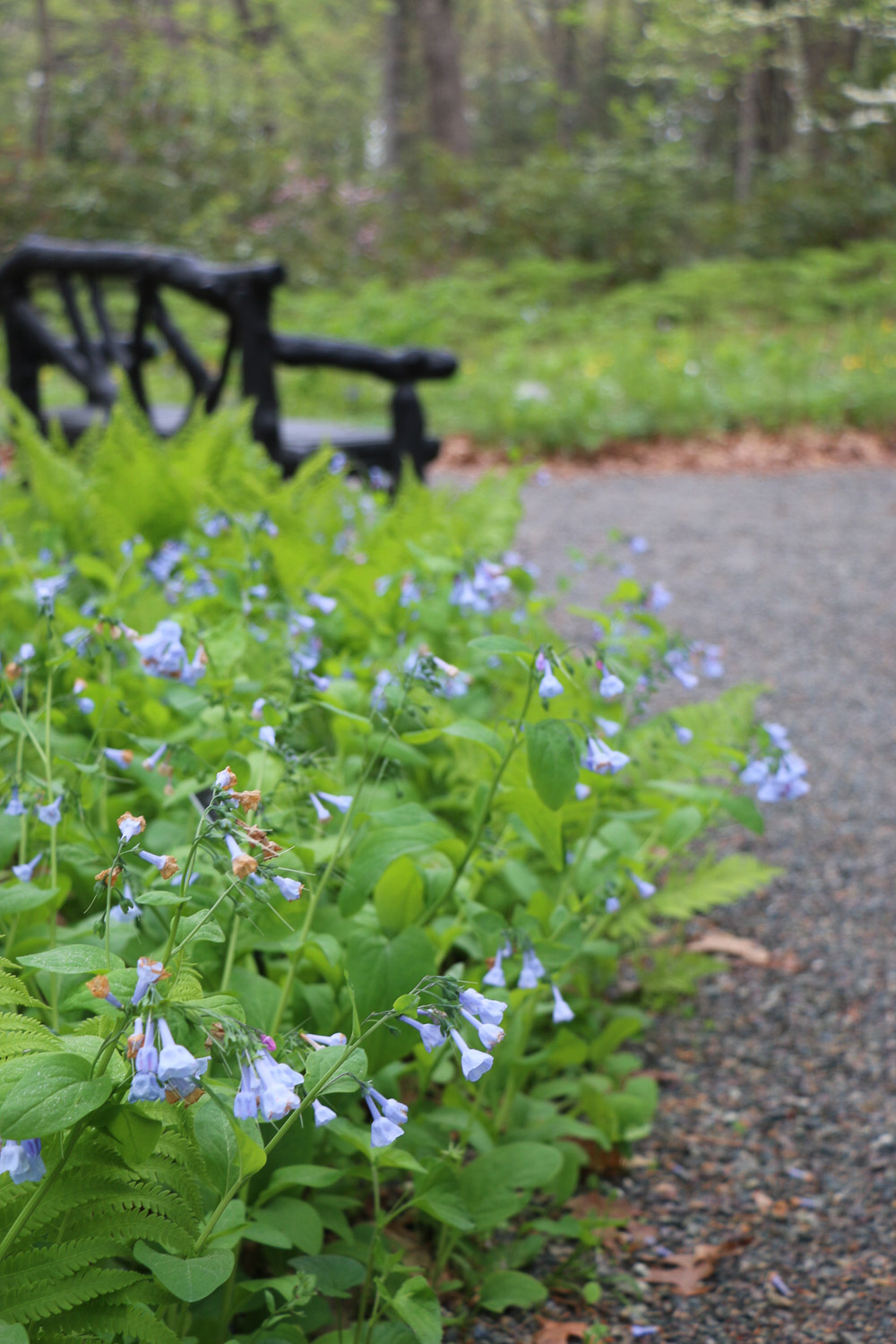Would you like to take a tour of the New England Wild Flower Society’s Garden In The Woods with me? It is a wonderful place to visit for education about how to build your own native plant garden. The Garden in the Woods, located in Framingham, Massachusetts, is a renowned native plant garden managed by the Native Plant Trust. The garden is famous for its commitment to conservation and education about native flora in the New England region.

I visited last week when the trilliums and other spring-blooming plants were approaching their peak. As I arrived, I tried to remember the last time I had been to this place. And I realized that my memory of the place was distinctly tied to being pregnant with my son. So, I could easily put my last visit to 12 years ago. (!!)
As with any garden, things evolve and change significantly in 12 years. Mostly, I think I noticed how it has all come together a bit more. It is a wonderful place to gather plant inspiration for a woodland-style garden or a garden that features native New England plants.
If you have a shady garden or one that needs to be woodsy, it can be hard to find design inspiration that highlights the existing characteristics of your land.

The Garden in The Woods Bog Area
The bog in the Garden in the Woods replicates natural bog environments that are found all over New England. These are generally characterized by acidic, nutrient-poor, and water-saturated conditions. This environment supports plants that have adapted to these challenging conditions.
If you are looking for inspiration for what to do with a naturally occurring New England Bog that is in or adjacent to your own garden, this is one of the only places I know of where you can find native plant inspiration.
You will find a fascinating collection of native bog plants like pitcher plants, sundews, and wild orchids, which are not commonly seen in more conventional garden settings.
Massachusetts has three species of sundew plants, which are carnivorous plants that trap insects with sticky droplets on their leaves: Round-leaved sundew (Drosera rotundifolia), Spatulate-leaved sundew (Drosera intermedia), and Thread-leaved sundew (Drosera filiformis).
The bog area demonstrates how bogs function and their importance to biodiversity. It offers visitors the chance to learn about bog ecosystems, which are crucial for supporting wildlife and maintaining ecological balance for a much wider area. Bogs are especially susceptible to threats from development and pollution.


The Garden in the Woods was created on the site of an old stone quarry, and it highlights the glacier-carved ridges, steep hillsides, valleys filled with bogs, and meandering streams with native and naturalistic woodland planting throughout.
If you go in May, you can probably still the trilliums (the collection is huge!). As well as redbud trees, woodland poppies, and bluebells. They will soon give way to columbine and early summer plants.






I have to admit that even though I enjoyed everything that was in bloom, my favorite part of the garden is the “Hidden Valley”. What a lovely way to keep fallen trees onsite but weave them into something so visually appealing.


The hidden Valley installation was created in 2007 by landscape architect W. Gary Smith as part of an exhibit called ‘Art Goes Wild.’ It is literally my favorite thing in the whole landscape.
As I came upon it, I had a bit of a de ja vu moment – had I seen it before?
I think perhaps I saw it under construction.
Or maybe pregnancy brain led me to forget about it completely? Whatever, It is a piece of land art that I found so inspiring and lovely.
How to Visit:
Garden in the Woods is in Framingham, MA, and can be visited daily. There is also an onsite shop that sells many of the native woodland plants that are featured in the gardens (including a huge variety of Trillium). Go with an empty trunk so you can load up!
all images by Rochelle Greayer
